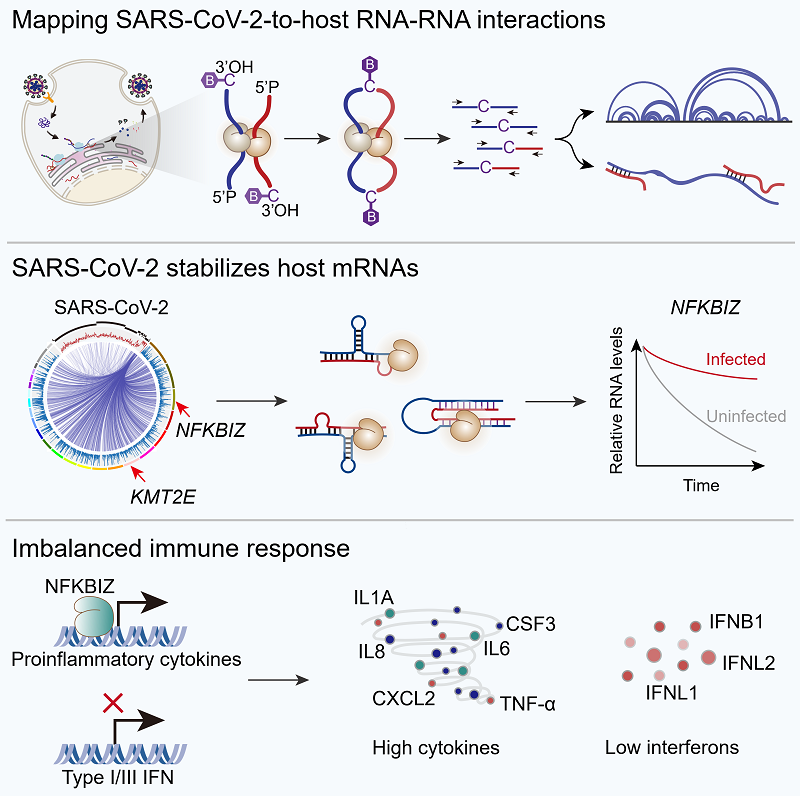In the past four years, the pathogen responsible of Coronavirus Disease 2019 (COVID-19), SARS-CoV-2, has infected over 770 million people and caused more than 6.9 million deaths worldwide. The severe impact of SARS-CoV-2 is often attributed to its ability to suppress the interferon (IFN) response while simultaneously inducing the production of various cytokines. This dual action directly leads to a cytokine storm, a critical factor contributing to the mortality of COVID-19 patients. However, the precise mechanisms through which SARS-CoV-2 initiates this cytokine storm have remained elusive.
To address this question, a research team led by Prof. XUE Yuanchao from the Institute of Biophysics of the Chinese Academy of Sciences, together with their collaborators, has profiled the SARS-CoV-2-to-host RNA-RNA interactions.
This study, published in Molecular Cell on Dec. 20, unveils for the first time the molecular intricacies of how SARS-CoV-2 RNA interacts with and stabilizes host mRNAs, ultimately triggering the cytokine storm.
Using state-of-the-art RIC-seq technology, the researchers comprehensively mapped the SARS-CoV-2-to-host RNA-RNA interactions in infected cells and lung tissues obtained from two deceased COVID-19 patients. Through mass spectrometry analysis of the RNA pull-down assay, they discovered that SARS-CoV-2 RNA forms base pairs with the 3' UTR of host mRNAs and recruits the RNA-binding protein YBX3 to stabilize host mRNAs in A549-ACE2 and Vero cells. Importantly, interference with the SARS-CoV-2-to-host RNA-RNA interaction or the knockdown of YBX3 significantly reduced host mRNA stability and hindered SARS-CoV-2 replication.
Among the stabilized host mRNAs, NFKBIZ emerged as a key factor in promoting cytokine production and suppressing IFN responses, potentially contributing to the cytokine storm. Knocking down NFKBIZ resulted in a significant decrease in the expression levels of proinflammatory factors such as IL-6, IL-8, and CXCL2, while the levels of type I/III IFNs, including IFNB1, IFNL1, and IFNL2, increased. These findings suggest that SARS-CoV-2 may induce a cytokine storm via stabilized host mRNAs, with NFKBIZ playing a pivotal role.
This research not only sheds light on the regulatory role of RNA-RNA interactions in the immunopathogenesis of RNA viruses such as SARS-CoV-2, but also contributes to the development of novel strategies to combat COVID-19.
The results open new avenues for targeted interventions aimed at disrupting the specific molecular mechanisms responsible for the cytokine storm associated with severe cases of COVID-19.







